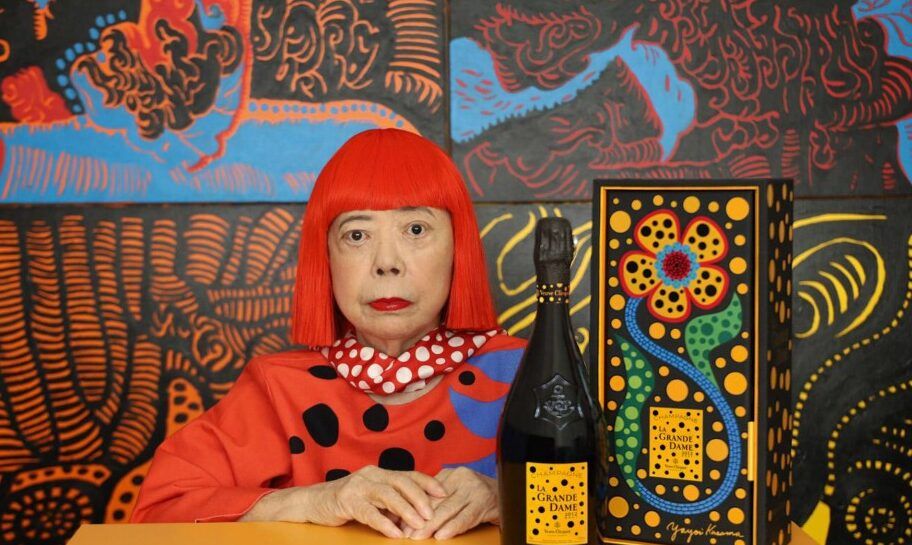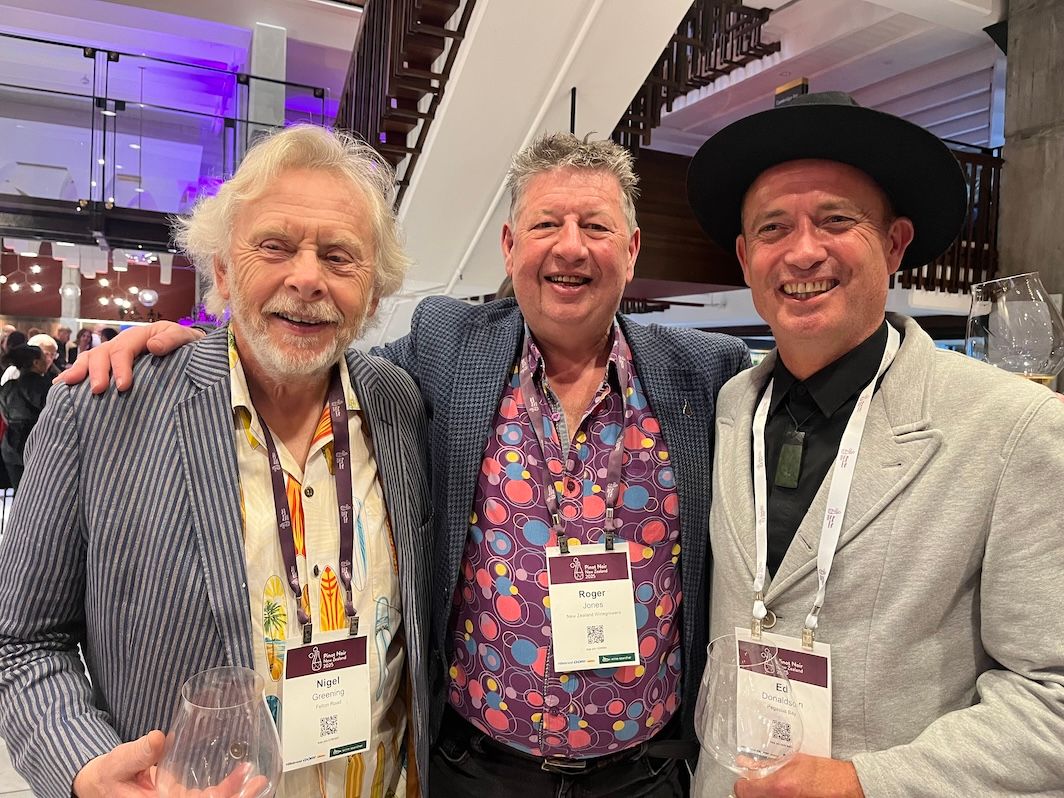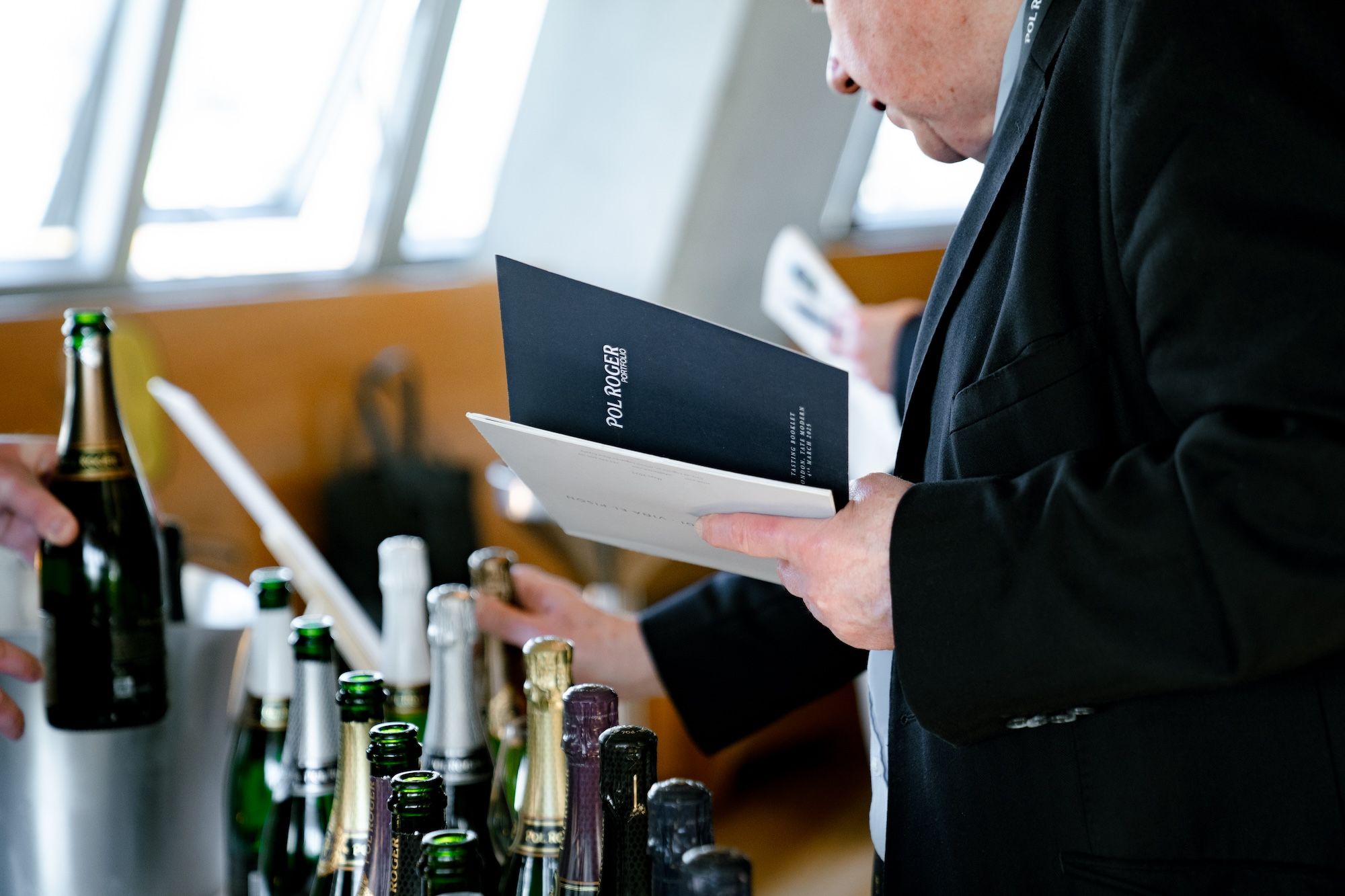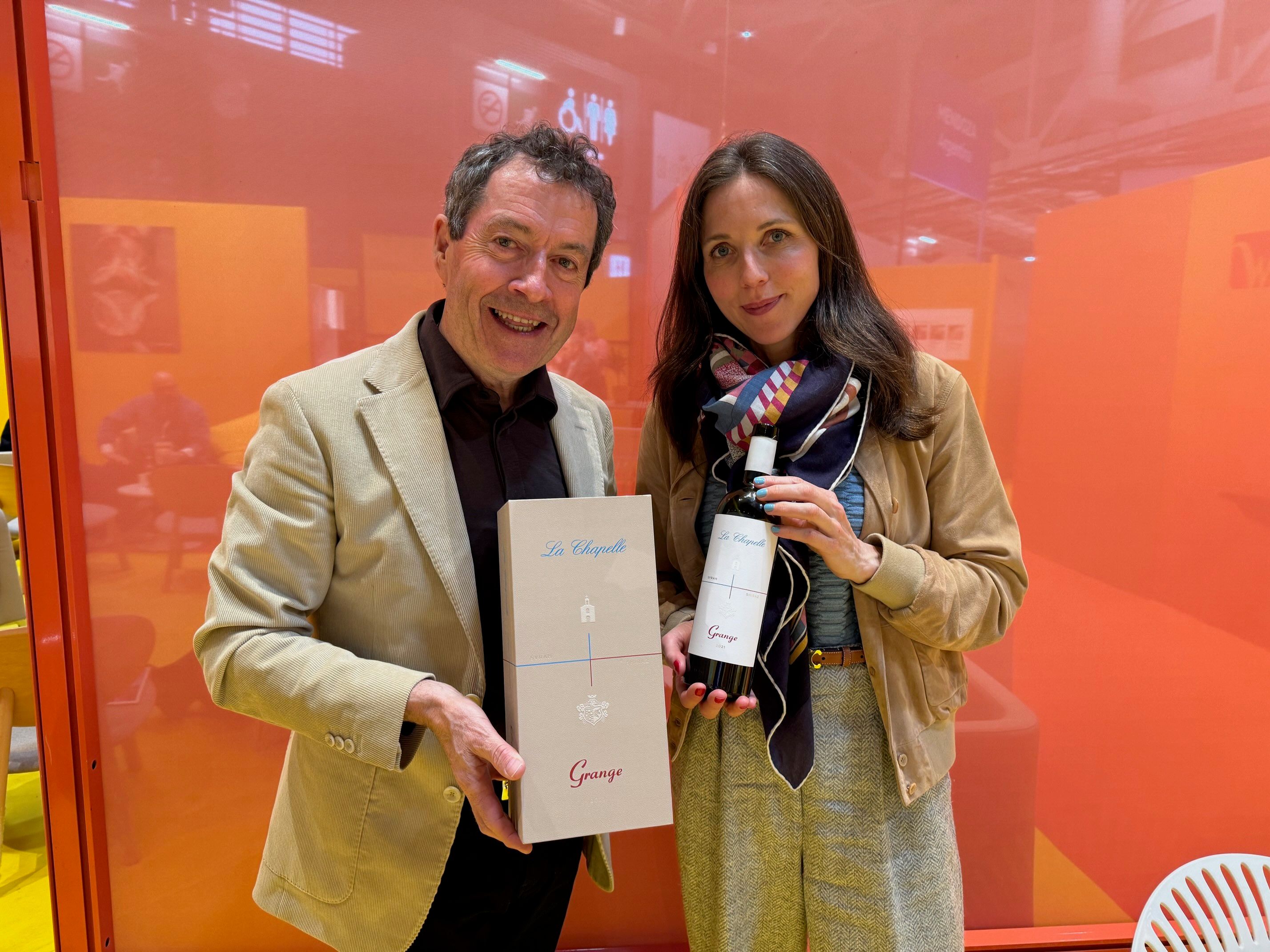“White floral aromatics, jasmine, honeysuckle then opens up a creamy complex structure, and energy and freshness giving it texture. Pink grapefruit, apricots, some hazelnuts, flint and minerality, fresh and rich, finishing with a silky deliciousness,” Jones says of the new La Grande Dame 2012.
Veuve Clicquot earlier this year announced a year-long partnership with Tate Modern in the UK to help support the gallery. This follows Veuve Clicquot’s own collaboration with iconic Japanese artist Yayoi Kusama on the House’s latest vintage La Grande Dame 2012, so it was fitting that Didier Mariotti, Clicquot’s chef de cave was actually live in person hosting a tasting at the Tate which coincided with the Tate Modern exhibition ‘Yayoi Kusama: Mirror Infinity Rooms’.

Tasting La Grande Dame 2012 at the Tate Modern
Mariotti was keen to highlight the importance of the Pinot Noir grape to the composition of the wines that he presides over. The following percentages of Pinot Noir are found in these Veuve Clicquots: Yellow Label; 50-55%, Vintage 2012; 51%, La Grand Dame 90%.
This is not a new focus on Pinot Noir, indeed Madame Clicquot believed that Pinot Noir had the broadest range of expression and potential to create the best champagne. It was her love of Pinot Noir that led her to acquire ten of the houses’s 12 emblematic Pinot Noir parcels/plots.
Mariotti wanted to emphasis the importance and the differing expressions of this grape so gave us six base Pinot Noir wines from different parcels and vintages to try.
Tasting the base wines
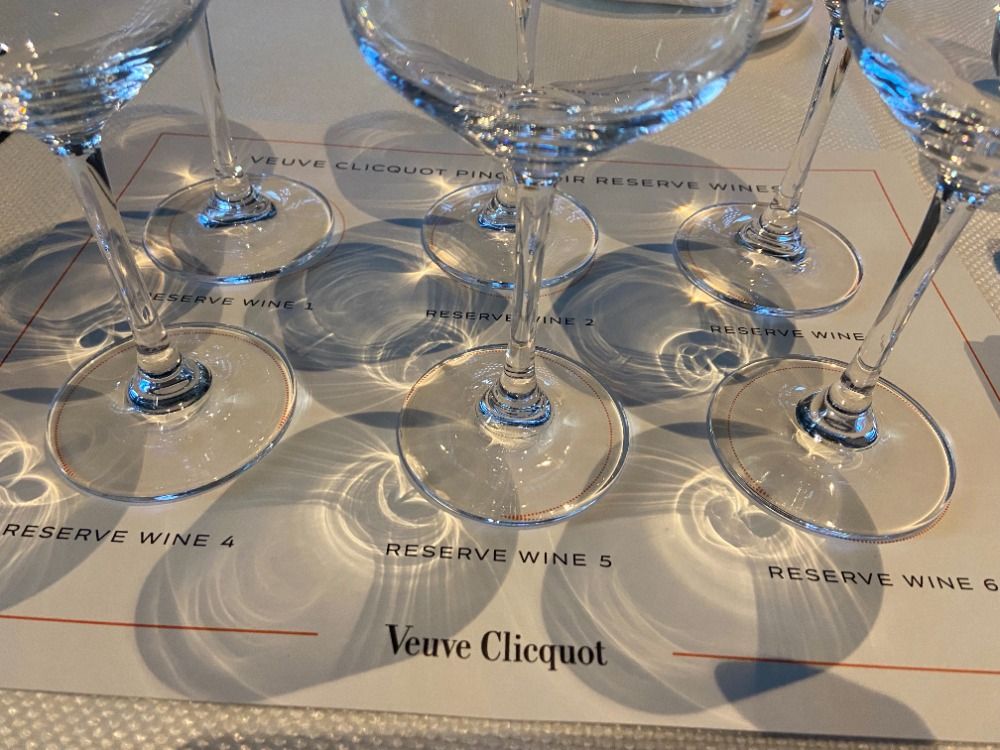
Pinot Noir Ambonnay 2019
Fresh clean acidity, green and red apples, citrus peel, young fresh spices, juicy and racey.
Pinot Noir Aube 2014
This has texture and depth, complexity , floral and creamy, some spice giving it a lift, some spritz in the mouth giving it an uplift, some peeled stone fruit and white flowers.
Pinot Noir Bouzy 2010
Bright nose, spiced and aged, lovely depth and spices. Hints of bacon, apples, rich but not toasty, restrained and elegant, still has fresh acidity.
Pinot Noir Verzenay 2008
Bruised apple and spice, some apple crumble nuances, there is a lift to this, elegant, hints of reduction and a touch smokey.
Pinot Noir Verzy 2006
This is creamy with a hint of nougatine, apricots, smoke, focused, touch of bitterness, gentle acidity, finishes with freshness.
Pinot Noir Aube 1996
The oldest of the six base wines currently being used, there are apricots and nougatine, mint choc cookie, richly spiced, touch of oxidisation, spiced and creamy at the end.
And how were the Champagnes tasting?
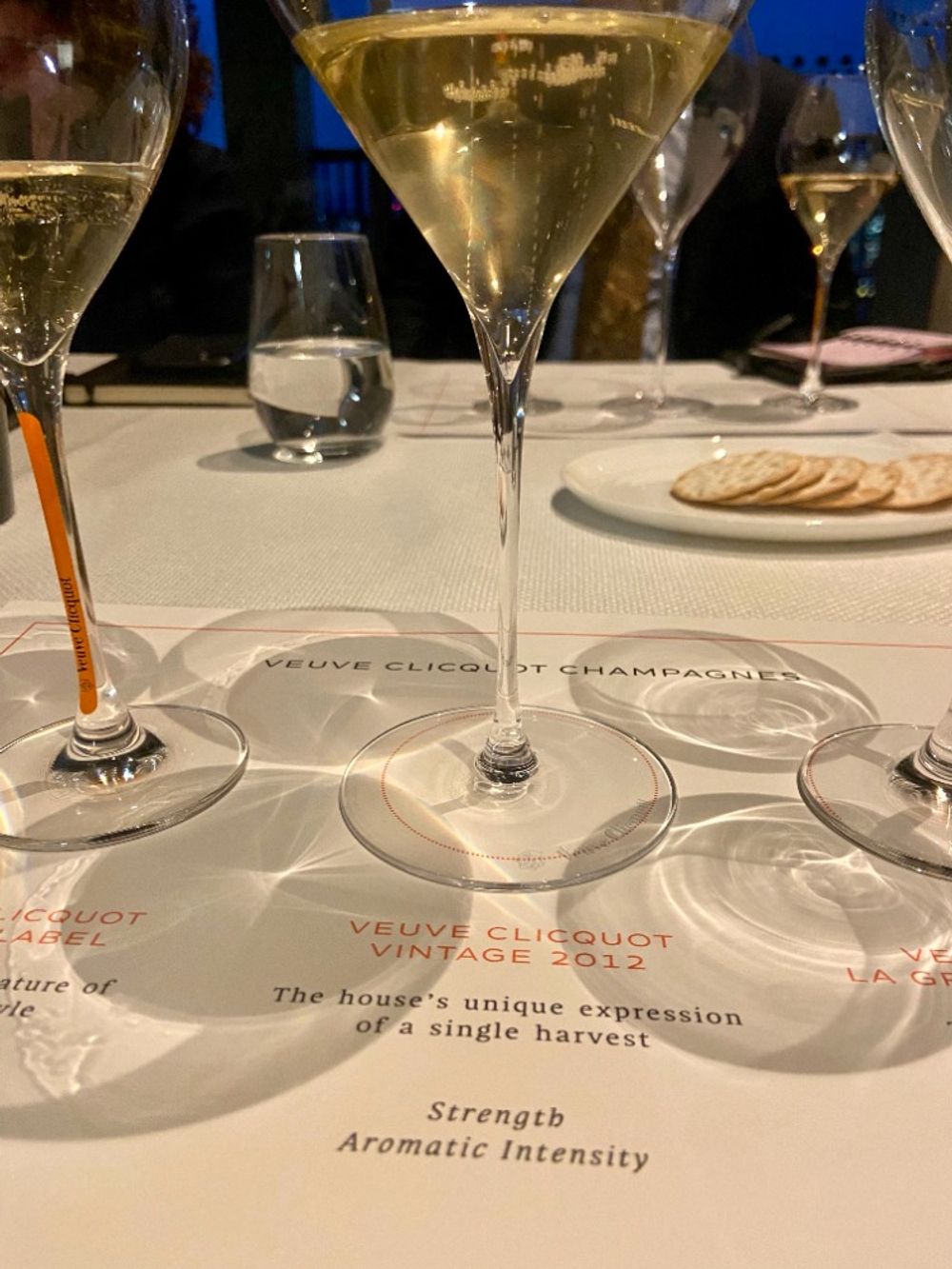
Veuve Clicquot Yellow Label
The Yellow Label was established as a drier partner to the White Label, and was trademarked all the way back in 1877!
Always try and allow your Yellow Label to age a bit before drinking, and the sample we had had definitely gained in quality with a bit of extra storage. This was fresh, juicy and fruity, gentle acidity. The Yellow Label uses between 30 to 45% from its reserve wine stock.
Veuve Clicquot Vintage 2012
Madame Clicquot established the first Vintage Champagne in 1810, it was an exceptional vintage and she made a champagne for the first time solely from the grapes of that year. In those days bottles were shipped unlabelled, and to distinguish these single vintage champagnes from the others she tied a yellow ribbon to the neck of each vintage bottle.
Fresh and forward with a hint of saline, opens up in the glass to deliver a complexity of apricots, spices, pear William, roasted nuts, expressive and lively.
Veuve Clicquot La Grande Dame 2012
White floral aromatics, jasmine, honeysuckle then opens up a creamy complex structure, and energy and freshness giving it texture. Pink grapefruit, apricots, some hazelnuts, flint and minerality, fresh and rich, finishing with a silky deliciousness.
So why the partnership?
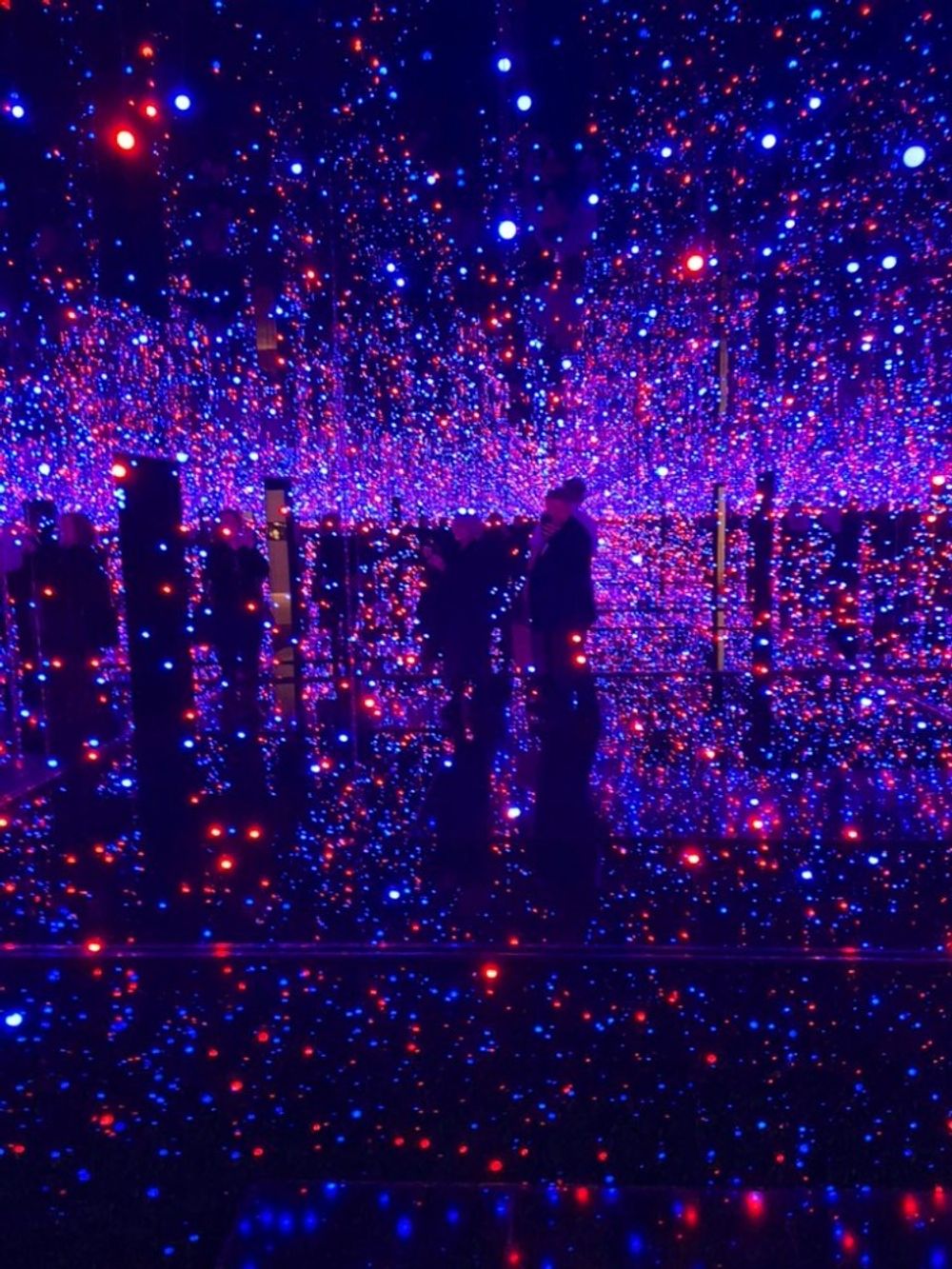
Yayoi Kusama: Mirror Infinity Rooms – visiting the exhibition after the tasting
Despite being separated by 150 years and thousands of miles between their homelands, Madame Clicquot and Yayoi Kusama share incredible similarities between their lives.
It all begins with their well-to-do and strict childhoods. Both Nicole Barbe Ponsardin and Yayoi Kusama were well-born, and familiar with the rigidity that prevailed in the bourgeoisie of the 19th and 20th centuries. Both women went on to counter that strictness throughout their lives, maintaining one goal: to gain independence and conquer the world.
“I wish my brand to rank first in New York like in St. Petersburg,” wrote Madame Clicquot in 1831 in one of her many letters. During her time, Yayoi Kusama said, “I promised myself that I would conquer New York and make my name in the world with my passion for the arts and my creative energy.”
Madame Clicquot acquired this independence when, as a 27-year-old widow, she took the reins of her late husband’s Champagne house – all this at a time when women did not have the right to work or hold a bank account. Yayoi Kusama gained hers when she left her native Japan to go to America at age 28. This emancipation helped define the bold character of these two extraordinary women, together with their creativity, daring and visionary spirit.
The exhibition is running at Tate Modern until June 2022, although it is currently sold out till the Spring. The new partnership enables Veuve Clicquot to host several private viewings for clients and customers, so you may be in luck if you cannot get a ticket, just stock up on more Veuve Clicquot. In addition, Veuve Clicquot cuvées will be available in the bar at Tate Modern, with the flagship Yellow Label NV becoming house pour champagne. Tate also plans to launch Kusama-inspired menus and afternoon teas paired with Veuve Clicquot.
